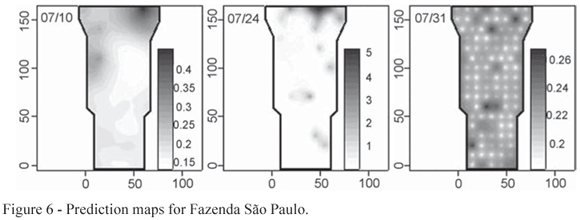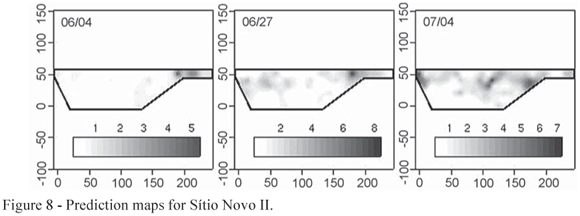Onion (Allium cepa) is one of the most cultivated and consumed vegetables in Brazil and its importance is due to the large laborforce involved. One of the main pests that affect this crop is the Onion Thrips (Thrips tabaci), but the spatial distribution of this insect, although important, has not been considered in crop management recommendations, experimental planning or sampling procedures. Our purpose here is to consider statistical tools to detect and model spatial patterns of the occurrence of the onion thrips. In order to characterize the spatial distribution pattern of the Onion Thrips a survey was carried out to record the number of insects in each development phase on onion plant leaves, on different dates and sample locations, in four rural properties with neighboring farms under different infestation levels and planting methods. The Mantel randomization test proved to be a useful tool to test for spatial correlation which, when detected, was described by a mixed spatial Poisson model with a geostatistical random component and parameters allowing for a characterization of the spatial pattern, as well as the production of prediction maps of susceptibility to levels of infestation throughout the area.
Poisson distribution; spatial statistics; randomization tests; geostatistics


















